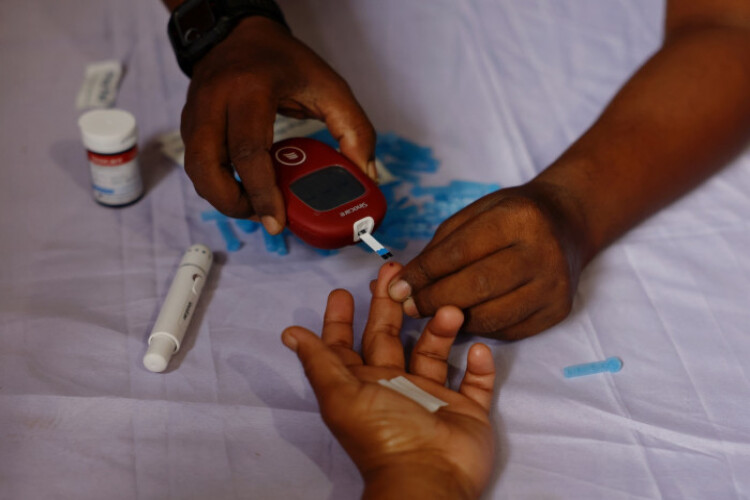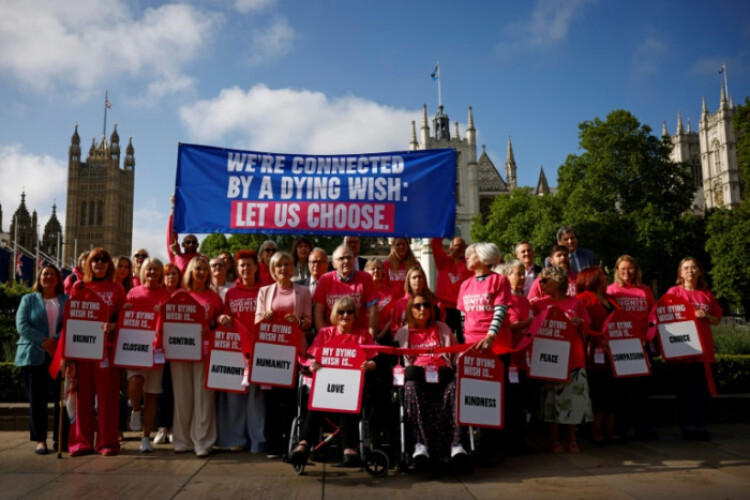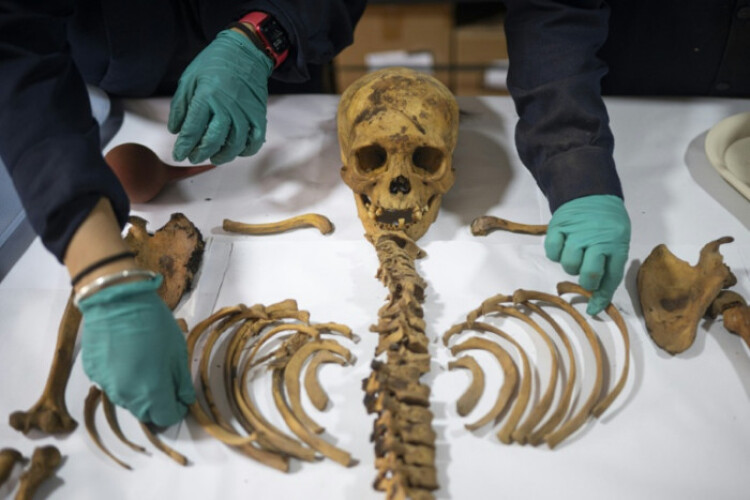
LONDON - More than 800 million adults have diabetes worldwide — almost twice as many as previous estimates have suggested — and more than half of those aged over 30 who have the condition are not receiving treatment, according to a new study.
The study published in the medical journal The Lancet found the global prevalence of diabetes has doubled since 1990, to 14% from around 7%, and the authors suggest the increase has been driven largely by rising cases in low- and middle-income countries.
Although there are far more cases, treatment rates in those regions have barely increased, the authors said, while things have improved in some higher-income countries — leading to a widening treatment gap.
In 2022, there were around 828 million people aged 18 years and older with type 1 and type 2 diabetes worldwide, the study found. Among adults aged 30 years and older, 445 million, or 59% of them, were not receiving treatment, the authors said.
The World Health Organization has previously estimated that about 422 million people have diabetes, a chronic metabolic disease involving blood sugar levels, which can damage the heart, blood vessels, nerves and other organs if untreated.
Dr Tedros Adhanom Ghebreyesus, the WHO director-general, said in a statement that the rise documented in the study was alarming.
“To bring the global diabetes epidemic under control, countries must urgently take action,” he said, including with policies supporting healthy diets and physical activity, as well as health systems that can prevent, detect and treat the condition.
In parts of sub-Saharan Africa, only 5-10% of those estimated to have diabetes were getting treatment, said Jean Claude Mbanya, professor at the University of Yaounde I in Cameroon. Treating diabetes, either with insulin or drugs, can be expensive.
“A huge number (are) at risk of serious health complications,” he said.
The study was done by the NCD Risk Factor Collaboration and the WHO, and is the first global analysis to include rates and treatment estimates for all countries, the authors said. It is based on more than 1,000 studies involving more than 140 million people.
Diabetes was defined as having high fasting plasma glucose levels and high glycated haemoglobin, both common diagnostic criteria for the condition, or taking medication for diabetes.
The authors said both tests were used to avoid underestimating rates in parts of the world, particularly South Asia, where using fasting plasma glucose alone missed cases.
While the study could not separate out type 1 and type 2 cases, previous evidence has suggested that most diabetes in adults is type 2, which is linked to obesity and poor diet, the authors said.
The study published in the medical journal The Lancet found the global prevalence of diabetes has doubled since 1990, to 14% from around 7%, and the authors suggest the increase has been driven largely by rising cases in low- and middle-income countries.
Although there are far more cases, treatment rates in those regions have barely increased, the authors said, while things have improved in some higher-income countries — leading to a widening treatment gap.
In 2022, there were around 828 million people aged 18 years and older with type 1 and type 2 diabetes worldwide, the study found. Among adults aged 30 years and older, 445 million, or 59% of them, were not receiving treatment, the authors said.
The World Health Organization has previously estimated that about 422 million people have diabetes, a chronic metabolic disease involving blood sugar levels, which can damage the heart, blood vessels, nerves and other organs if untreated.
Dr Tedros Adhanom Ghebreyesus, the WHO director-general, said in a statement that the rise documented in the study was alarming.
“To bring the global diabetes epidemic under control, countries must urgently take action,” he said, including with policies supporting healthy diets and physical activity, as well as health systems that can prevent, detect and treat the condition.
In parts of sub-Saharan Africa, only 5-10% of those estimated to have diabetes were getting treatment, said Jean Claude Mbanya, professor at the University of Yaounde I in Cameroon. Treating diabetes, either with insulin or drugs, can be expensive.
“A huge number (are) at risk of serious health complications,” he said.
The study was done by the NCD Risk Factor Collaboration and the WHO, and is the first global analysis to include rates and treatment estimates for all countries, the authors said. It is based on more than 1,000 studies involving more than 140 million people.
Diabetes was defined as having high fasting plasma glucose levels and high glycated haemoglobin, both common diagnostic criteria for the condition, or taking medication for diabetes.
The authors said both tests were used to avoid underestimating rates in parts of the world, particularly South Asia, where using fasting plasma glucose alone missed cases.
While the study could not separate out type 1 and type 2 cases, previous evidence has suggested that most diabetes in adults is type 2, which is linked to obesity and poor diet, the authors said.











